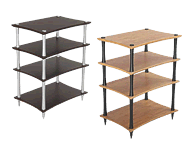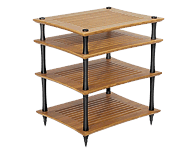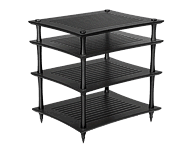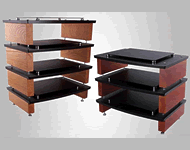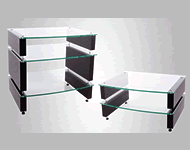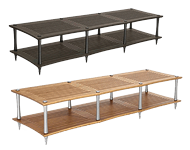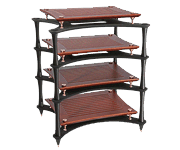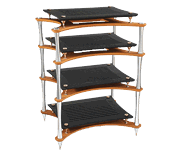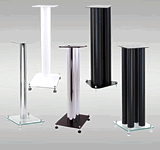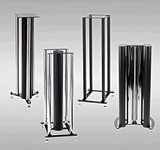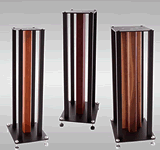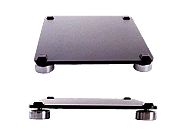HiFi Furniture@kemela
Allocating some funds towards HiFi furniture usually comes pretty low down on everyone's budget until they hear the benefits of placing a turntable or components on a HiFi rack or speakers on speaker stands. From the aesthetic point of view it's worthwhile anyway.
Unecessary Expense?
Expensive HiFi has to be put on something but it shouldn't be any old piece of furniture co-opted for use in a way that it was not originally designed for. When placed on a sideboard/buffet/credenza, turntables are susceptible to vibrations and resonances picked up by the cabinet from air-borne or floor conducted sound from loudspeakers - even worse if the loudspeakers are also on the same cabinet. Installing Audio components that put out a lot of heat - especially amplifiers - inside non-ventilated cabinets will shorten the life of the component because it will be operating under far hotter conditions than it was designed for and prematurely fail. Designed for HiFi equipment racks and speaker stands set off your audio components and make hooking up components easier, prolong the life of your gear, and maximize sound quality.
If your equipment has to sit on a cabinet, we have anti-resonance platforms and plinths from Custom Design to reduce vibrations from the cabinet getting into your HiFi gear.
Modular Equipment stands
At kemela we are always breaking down and rebuilding stands in different configurations as new gear comes in. Modular rack systems let you design your own shelf spacing for your components and configure for the right height and efficient vertical or horizontal footprint with enough space for all your components.
Why HiFi equipment racks improve sound quality?
Some components are piezoelectric and will inject small ripple voltages in repsonse to vibration. DAC crystal oscillators will loose accuracy and are particularly sensitive. Significant movement may even introduce electric field effects. High-end equipment tends to have a more substantial chassis and casings in part to manage vibrations
Speaker stands are best for small Loudspeakers
Don't skip on a good speaker stand so you can position speakers from both rear and side walls to interact with the room and at the appropriate height for your ears to get the best sound possible. Most "bookshelf" speakers will sound better on a stand rather tucked away on a bookshelf. Speakers will try and follow Newton's third law when reproducing a bass note. A heavier stand will resist better than a light weight one improving bass attack and timing. Stands interact with loudspeaker cabinet and floor vibrations in a complex way that is affected by the rigidity, mass loading and the transmission characteristics of the stand. Bass impact and weight, midrange openess, and high end 'air' can all be affected. Floor standing speakers often benefit from being placed on vibration absorbing plinths.
Wall mounts for turntables
Unless the turntables have a sophisticated suspension system, most of the lower and medium price ones are greatly affected by what they are put on. For rooms with bouncy floors, other than floor joist reinforcement, a turntable wall bracket may offer a solution.
